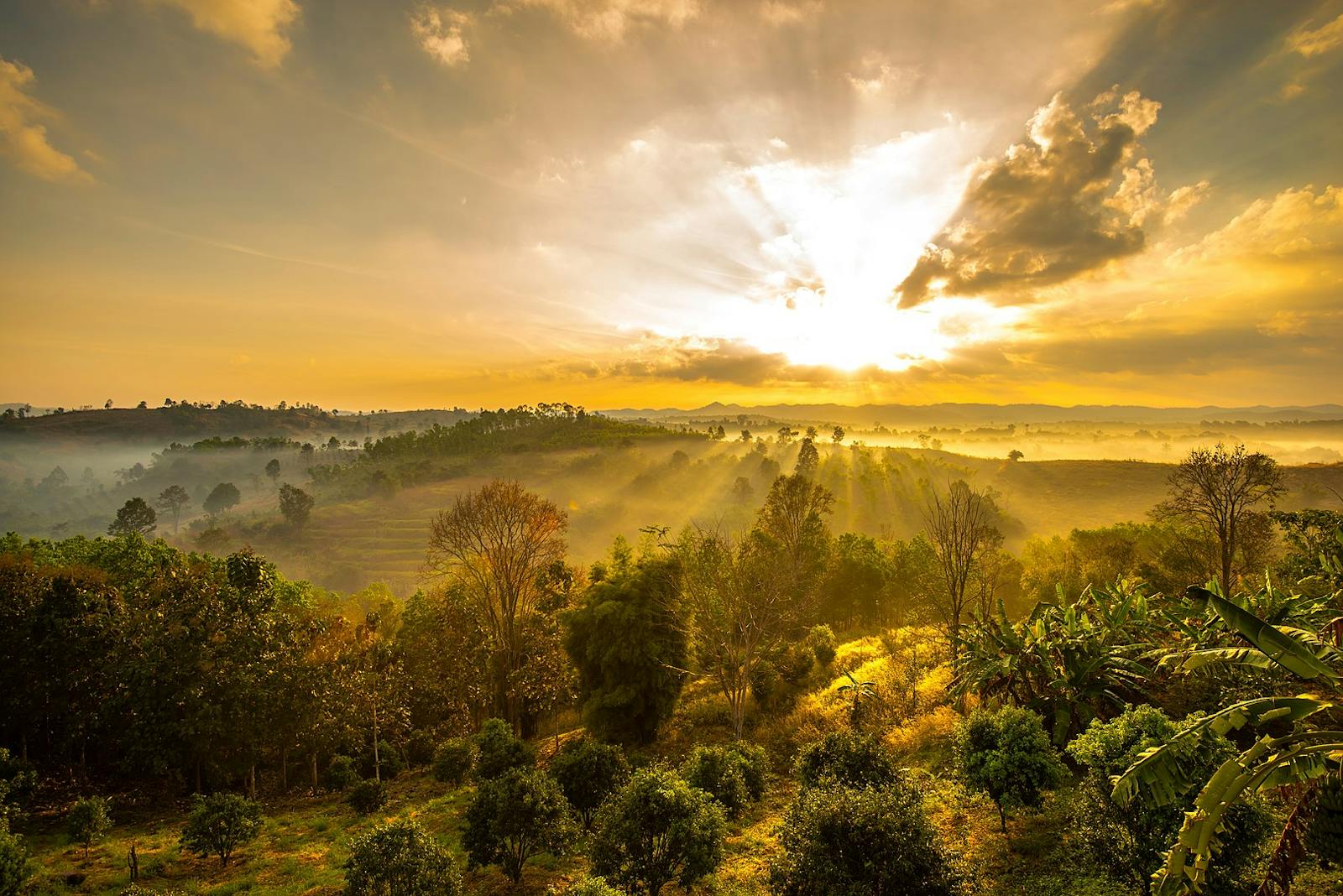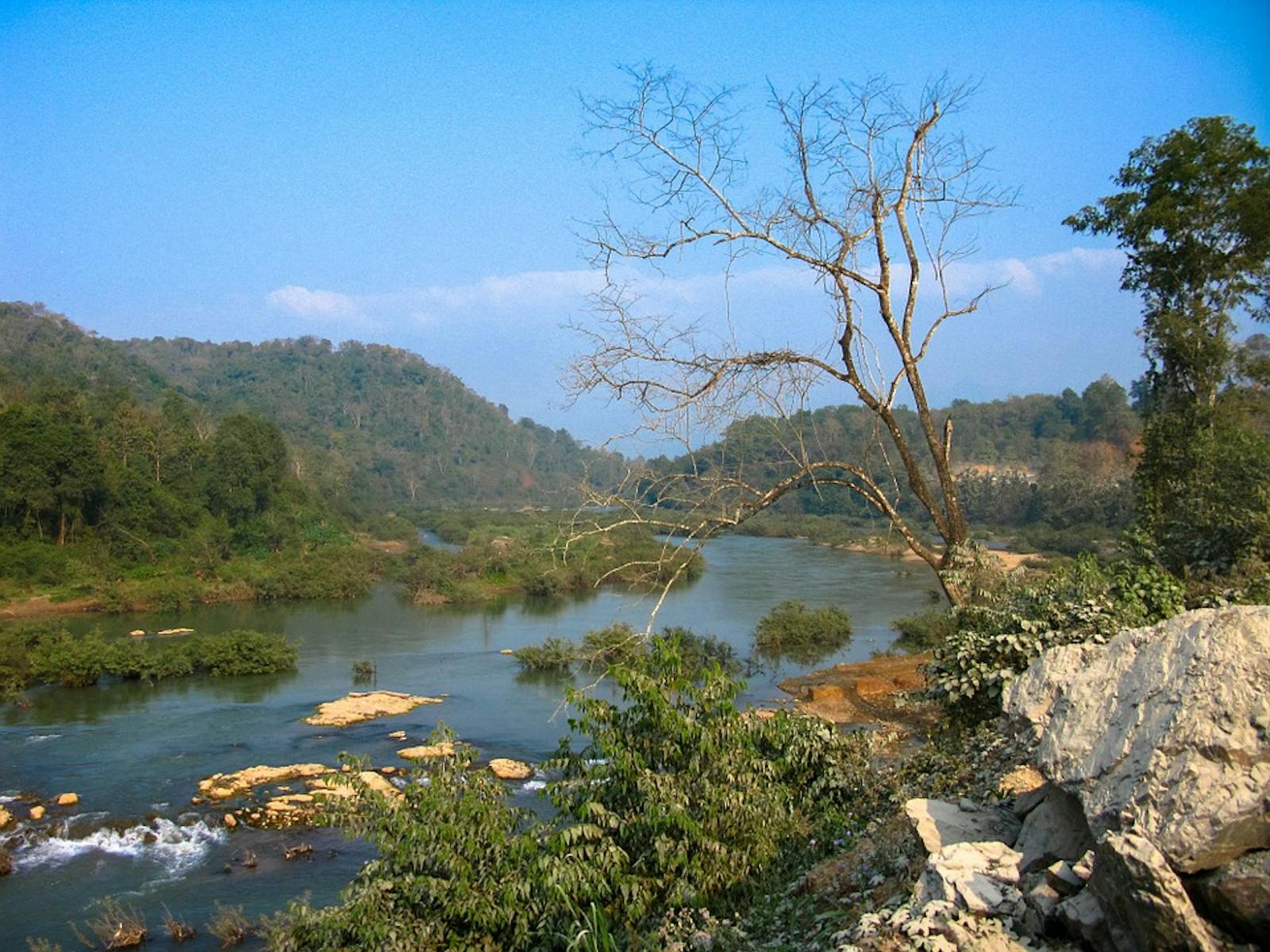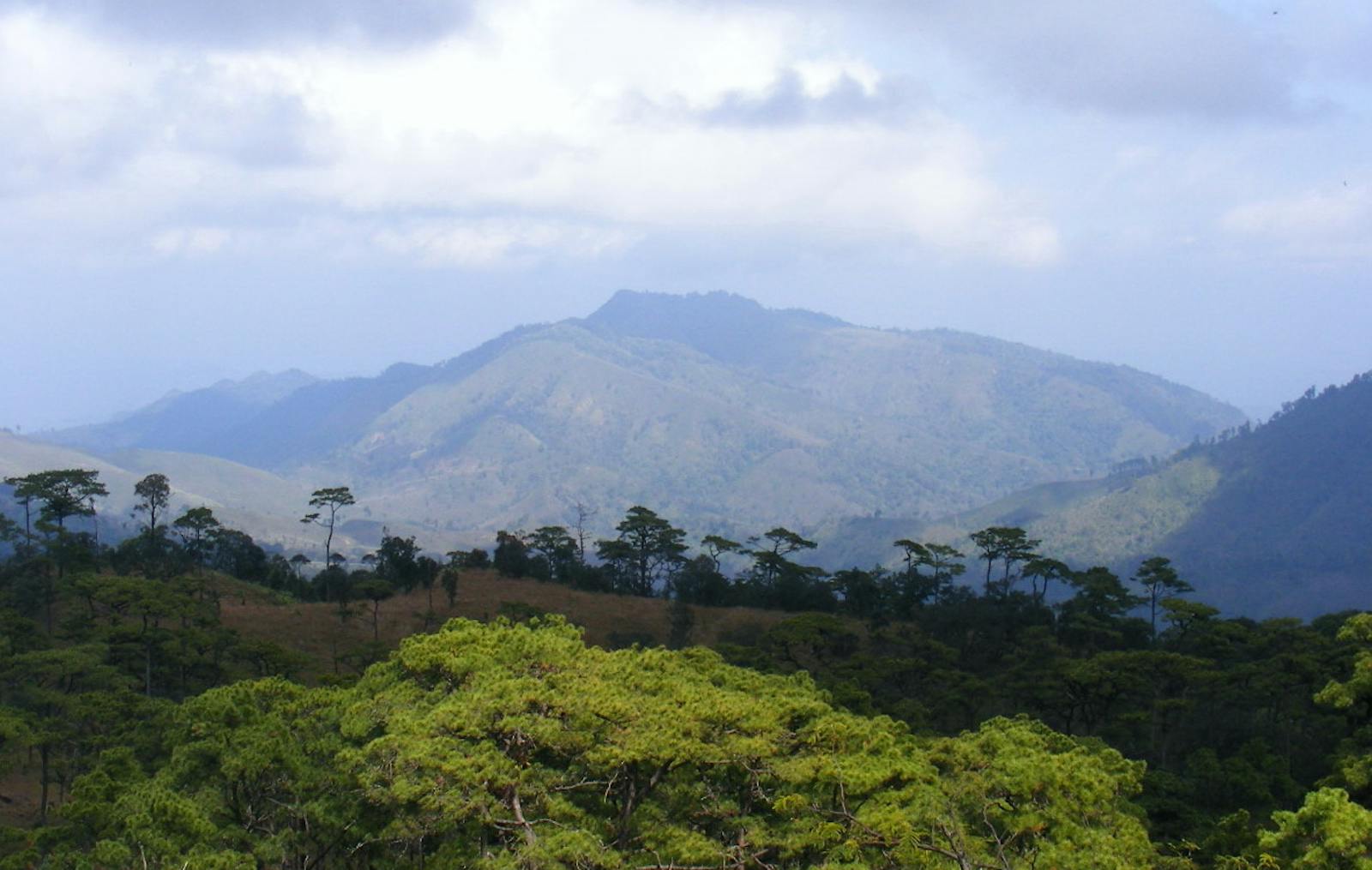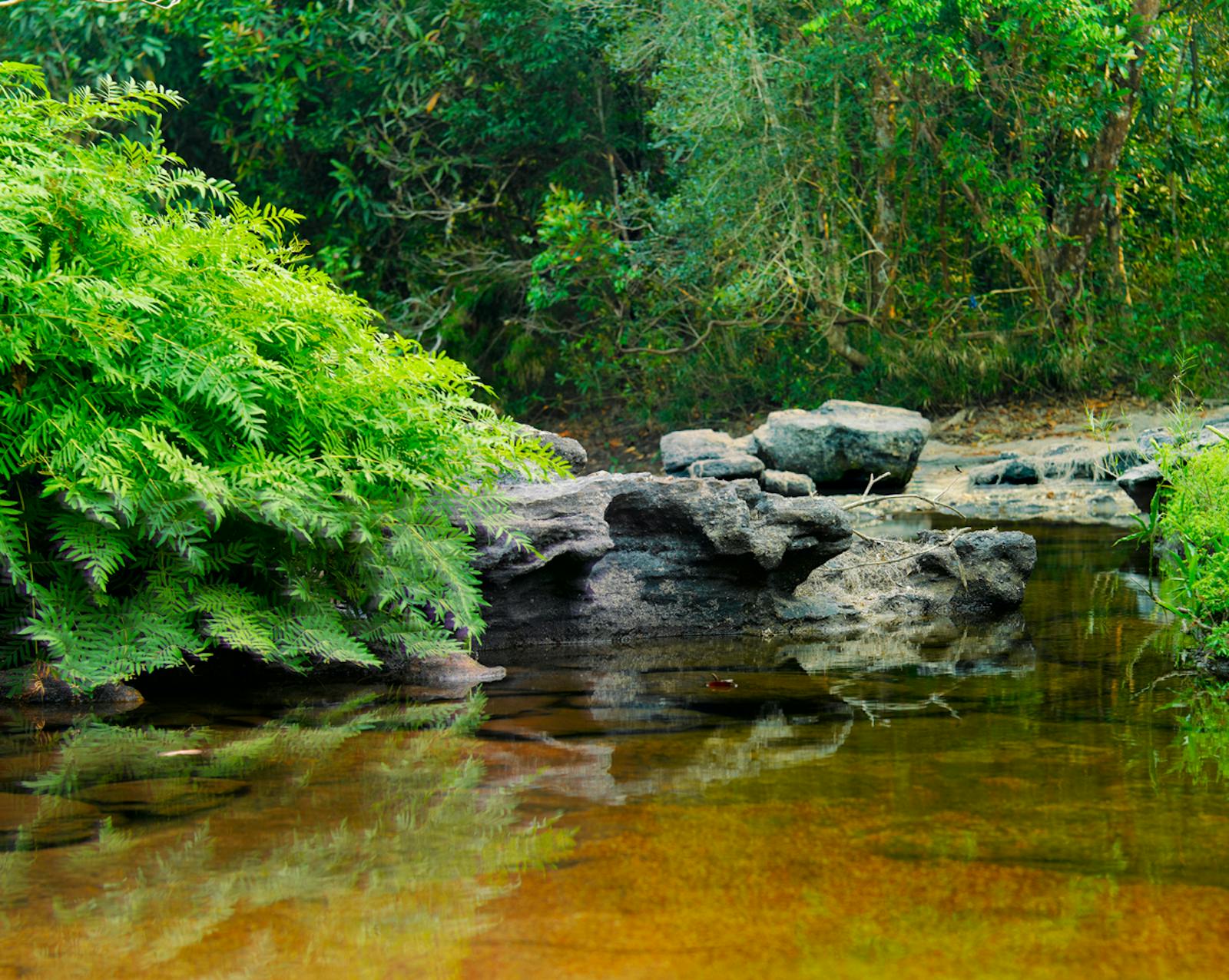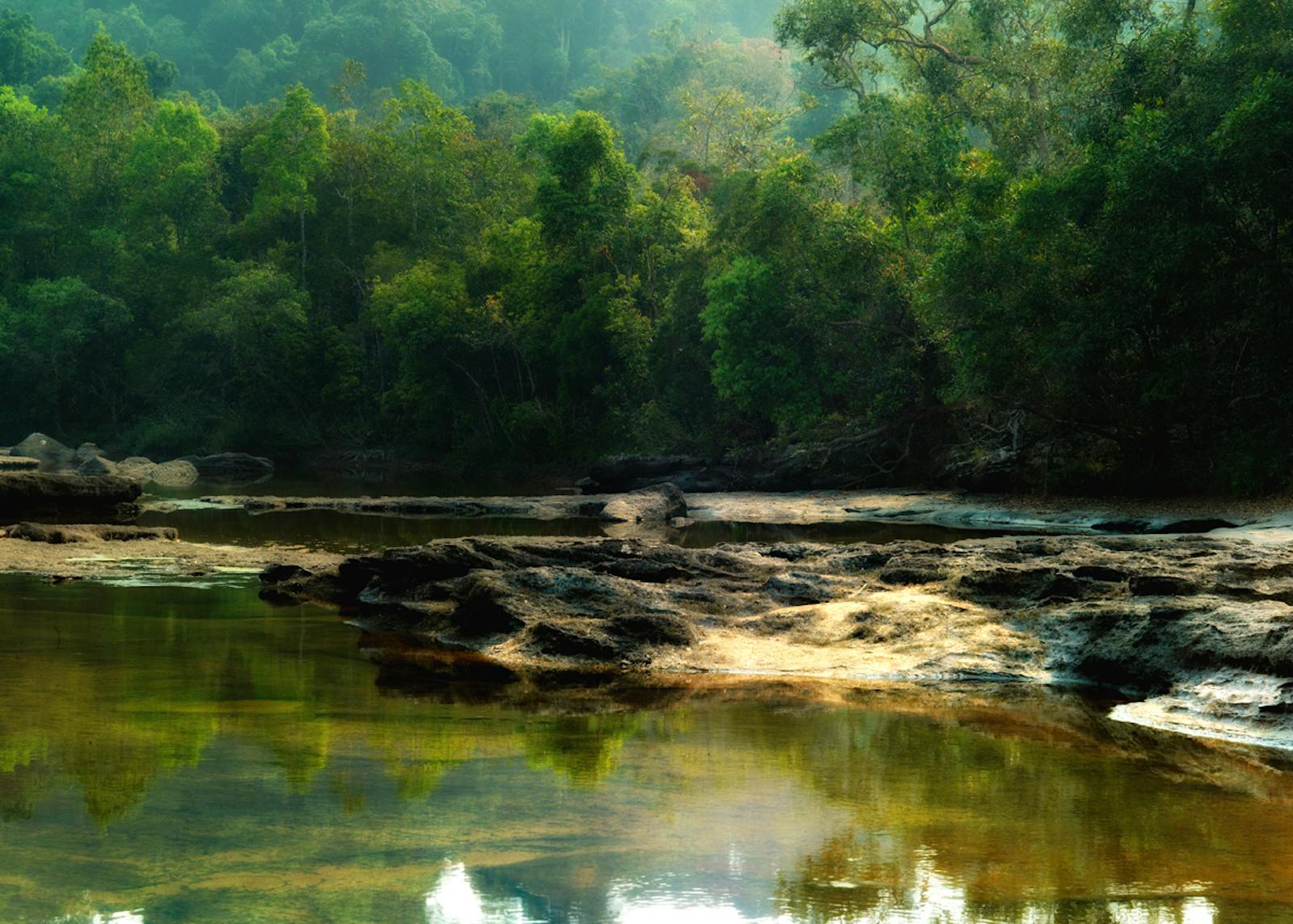Luang Prabang Montane Rainforests
The ecoregion’s land area is provided in units of 1,000 hectares. The protection goal is the Global Safety Net (GSN1) area for the given ecoregion. The protection level indicates the percentage of the GSN goal that is currently protected on a scale of 0-10. N/A means data is not available at this time.
Bioregion: Indochina Mixed Forests & Peatlands (IM12)
Realm: Indomalaya
Ecoregion Size (1000 ha):
7,197
Ecoregion ID:
239
Protection Goal:
57%
Protection Level:
3
States: Laos, Vietnam, Thailand
Camera trap surveys have revealed that the forests of northern Laos supports globally important populations of a small carnivore community of 14 species of mustelids, viverrids, and felids that are relatively rare or are unknown in most other parts of Asia. These mammals include Owston’s civet, marbled cat, and golden cat, which are of conservation concern. The ecoregion’s biodiversity is as yet largely unexplored, and various local surveys have led to scientific documentation of several new frogs and geckos. Over 50% of the ecoregion’s natural forests still remain unprotected, and presents ample opportunities to conserve these species.
The Luang Prabang Montane Rain Forests ecoregion represents the forests above 800 m in northern and central Laos and in small areas of northeastern Thailand, barely touching northern Vietnam. The forests transition into the Northern Indochina Subtropical Forests to the north, and Northern Annamites Rain Forests ecoregions to the east.

The flagship species of the Luang Prabang Montane Rainforests ecoregion is the marbled cat. Image credit: Creative Commons
The boundaries between ecoregions are not precise, defined by the gradual change in rainfall and length of the dry season. Rather than a single community type, the forests include a variety of forest associations including montane hardwood forests, mixed conifer-hardwood forests, open montane forests, and open conifer forests. The montane regions of northern Laos typically receive between 2,000 and 3,000 mm of annual rainfall during the summer monsoon, followed by a long dry season.
The forests at about 800 m are dominated by Dipterocarpus turbinatus and Toxicodendron succedanea, with a variety of palms such as Arenga saccharifera, Caryota species, and rattans (Calamus species). Higher elevations, from 1,000 to 1,500 m are characterized by a variety of forest communities based on the substrates and human disturbance. Evergreen forests are represented by species in the family Fagaceae, especially Castanopsis hystrix.
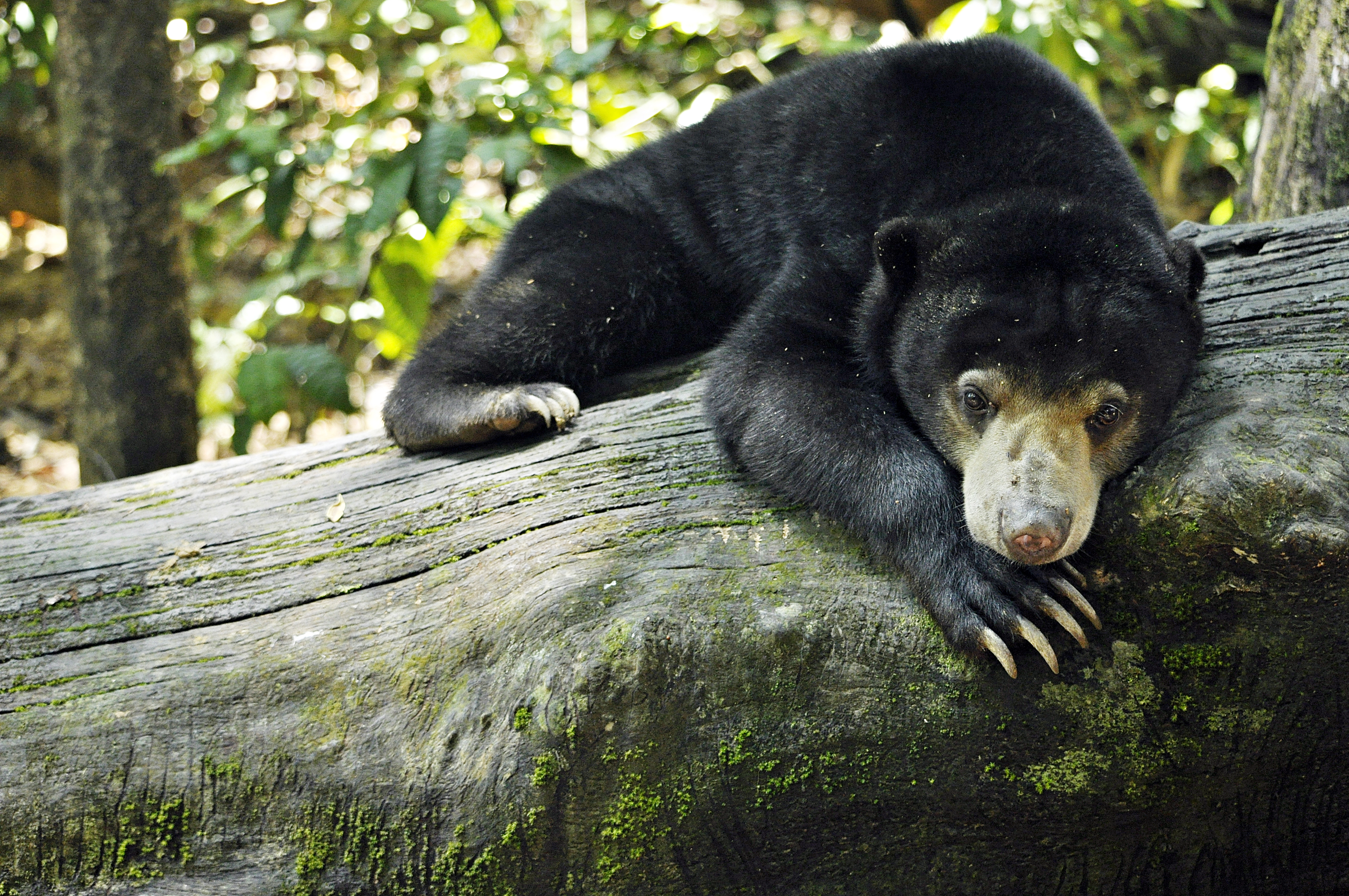
Sun bear. Image credit: Creative Commons
The low stature of trees and understory with broad-leaved monocots and grasses suggest that the forests have been severely influenced by burning and clearing, especially for swidden agriculture, which is common in northern Laos and Thailand. Open conifer-hardwood forests are present, with oaks, Quercus griffithii and Quercus serrata, and the conifer Keteleeria evelyniana as the dominant trees. Thin, granitic soils support an edaphic climax forest type dominated by Engelhardtia spicata with an understory of bracken fern, Pteridium aquilinum in some places.
In addition to the rare Owston’s civet and two rare small wild cats mentioned earlier, the ecoregion’s other small carnivore assemblage includes striped-back weasel, yellow throated marten, hog badger, oriental small-clawed otter, large Indian civet, small Indian civet, spotted linsang, masked palm civet, common palm civet, crab-eating mongoose, and leopard cat.
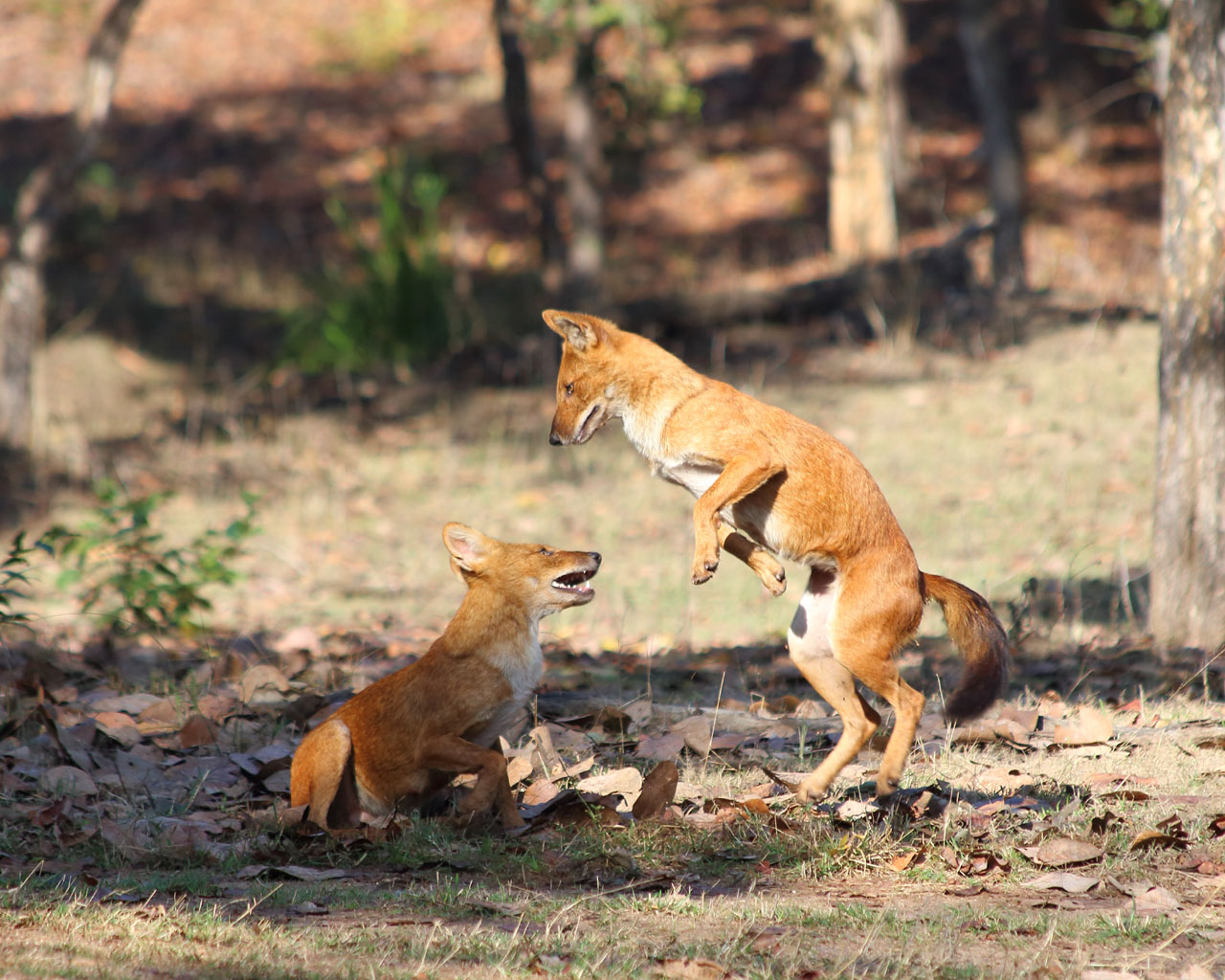
Dholes. Image credit: Fabrice Stoger, Creative Commons
Other threatened mammals of conservation significance include three charismatic primates: Francois’s leaf monkey, silvered leaf monkey, and douc langur. The ecoregion still supports populations of tiger and wild dog. Over 540 bird species occur in this ecoregion, including the rare green peafowl.
Forest clearing for swidden has happened for centuries, but is being replaced by conversion to plantations, such as rubber and corn. Hunting for subsistence and for the commercial markets is also common.
The recommended priority conservation interventions are to: 1) secure the existing protected areas from hunting and illegal forest clearing; 2) protect additional forests and habitat using a landscape-scale spatial approach, guided by the ecological requirements of the large and mid-sized forest mammal communities as conservation umbrellas; and 3) regulate and restrict forest conversion into plantations and promote more sustainable production practices.
Citations
1. Wikramanayake, E, E. Dinerstein, et al. 2002. Terrestrial Ecoregions of the Indo-Pacific: A Conservation Assessment. Island Press.
2. Critical Ecosystems Partnership Fund. 2012. Ecosystem Profile. Indo-Burma Biodiversity Hotspot. 2011 Update. https://www.cepf.net/Documents/final.indoburma_indochina.ep.pdf Accessed Dec 2017.
3. Greater Mekong Subregion Atlas of the Environment. 2nd ed. Asian Development Bank. 2012. https://www.adb.org/sites/default/files/publication/30074/gms-atlas-environment-2nd-edition.pdf. Accessed Dec 2017.
